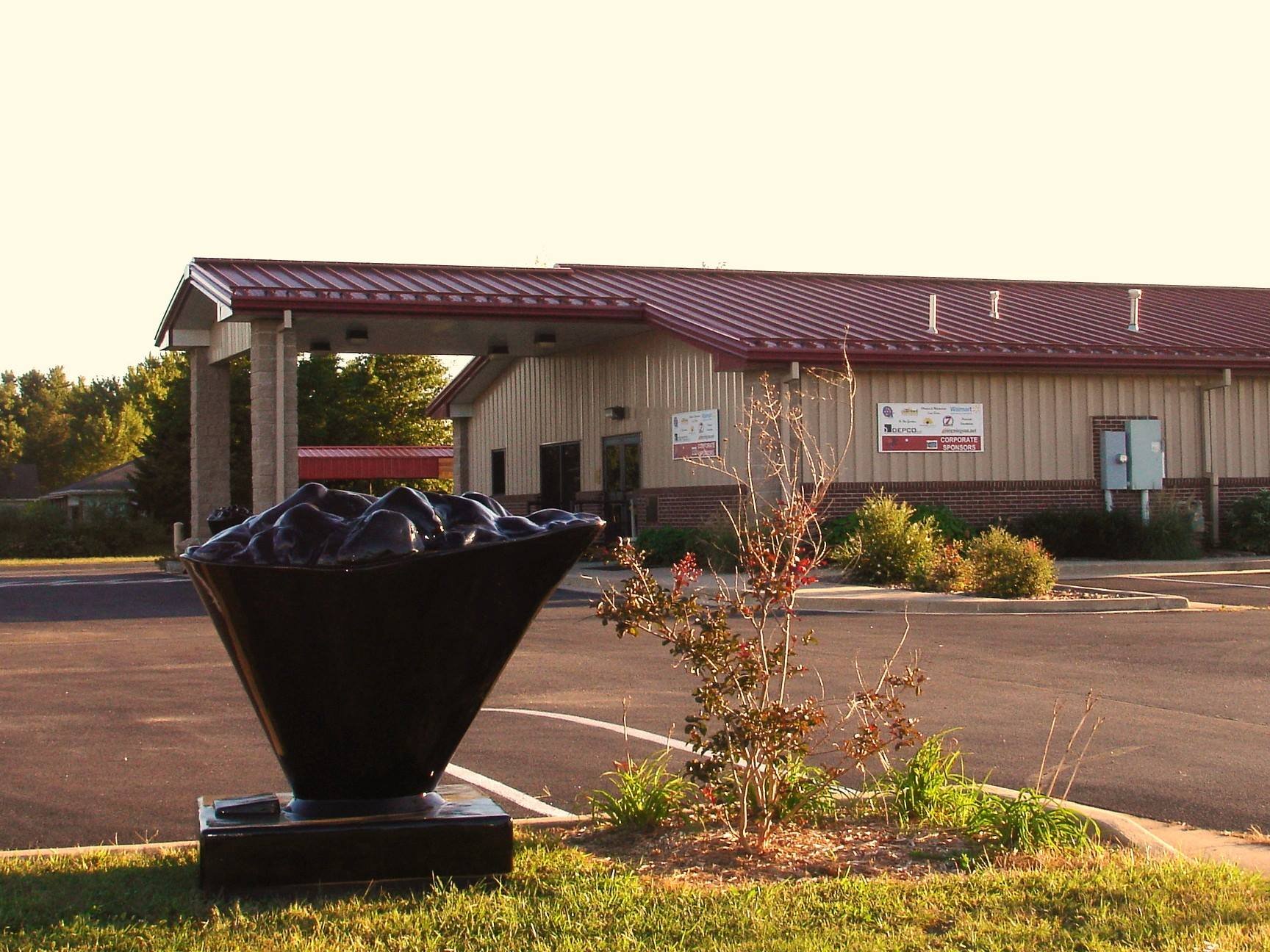Miners Hall Museum
Visitors to Miners Hall Museum are transported back in time through exhibits including a Coal Camp replica, which showcases the living conditions of miners and their families during the early to mid-20th century, the Amazon Army exhibit, and more. Soon to be on display is the impressive Insley Dragline.
Museum exhibits are laid out to tell the story of a miner’s life from immigration through work, social life, home life, education and much more.The Research Center contains ancestry & heritage information, camp town histories, rare photographs, information on local strikes & labor reform, significant men & women of the twentieth century, the Amazon Army and the story of Bootlegging in SE Kansas. These are just a few of the histories/artifacts one can encounter…
As an added attraction, original artwork and murals are on display in the museum as well as on the grounds. Several pieces of artwork from the SEK Artfest have been donated and are on display.
On June 30, 2018, MHM unveiled a new addition to the museum’s art collection “Spirit of the Little Balkans,” a mural by Antonio Martinez. The artwork joins our ever growing collection of indoor and outdoor murals, paintings, and sculptures
Coal Camp
Located behind the museum, this area represents an early 1900s community similar to the mining camps located in Southeast Kansas. It includes an Insley dragline, mining equipment, buildings with murals depicting commercial buildings of the time, a train, and a typical 3 room miner’s house (circa 1905) for a family with 8 to 10 children
Franklin/Arma Sidewalk
Walk the Walk! The historic Franklin/Arma Sidewalk is listed on the State and National Historic register. The 1.7 mile sidewalk was constructed in 1936. It has the honor of being the longest sidewalk connecting two communities.
The sidewalk was built as a safe way of travel for students walking to Arma schools once the Franklin High School was closed. A young girl, Edith Gardner, was killed walking along the highway on her way to school which was believed to be the motivator for locals to push for the sidewalk. The sidewalk runs adjacent to Business 69 Highway also known as "Jefferson Highway" and the "Frontier Military Scenic Byway".
Franklin Community Park
The park is built at the site of the former Franklin Community Center which was destroyed by an F4 tornado in 2003. Picnic, play, walk the 1/6 mile walking path and enjoy the memorial gardens and more historic artifacts. Notice the donation for the storm siren by actor/director Paul Newman.
Leave a lasting tribute to your Franklin family, business, or class in the Memorial Garden. Memorial Pavers are available for purchase to create a permanent tribute. Call 620-347-4220 for pricing and an order form, or for information on reserving the park for special events.
Make sure to have your picture taken by the historic Jefferson Highway Marker at the Franklin Community Park!
Jefferson Highway
Frontier Military Scenic Byway
Travel the Jefferson Highway: The highway is directly in front of Miners Hall Museum. It was the first transcontinental road to traverse North America, north to south, from Winnipeg Manitoba, Canada to New Orleans, Louisiana. It was advertised as the “Pines to Palms” Highway.
The highway is also known as the Frontier Military Historic Byway. It extends roughly 167 miles and approximates the old military trail used to transport troops and supplies, tying Fort Leavenworth to the north to the Oklahoma border to the south.
The Jefferson highway was conceived at a meeting in New Orleans in 1915 and was dedicated in 1919. The Jefferson Highway only existed as a named highway for a few years until it lost its title to the new standardized numbering system in the 1920s.
Amazon Army March
Miners Hall Museum is located at the site of the nationally recognized 1921 Amazon Army March. You will be standing on hallowed ground where thousands of immigrant women began their march. The wives, relatives, and supporters of striking miners marched across the SEK coalfields in protest of hazardous working conditions, poor pay, and discrimination. They were christened the “Amazon Army” by the New York Times.
Learn more at the historic Amazon Army Marker by visiting Miners Hall Museum or by visiting the Amazon Army Website.







